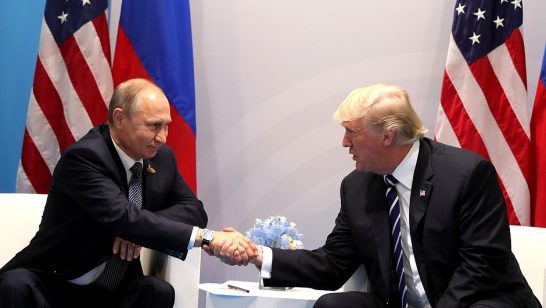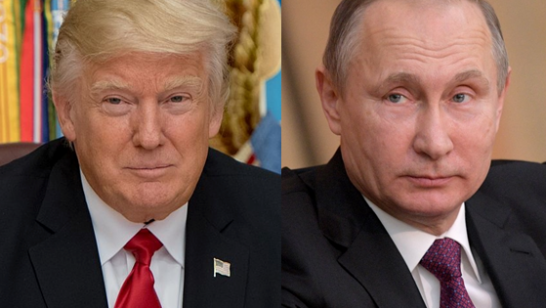
With the inauguration of Donald Trump as the 45th President of the United States, some hoped for a new opening in US-Russian relations. Many feared a “Yalta” style grand-bargain with division of spheres of influence. As President Trump starts his trip to Europe, which will include a meeting with Vladimir Putin in Hamburg, both these hopes and fears appear to be receding. In their place, however, emerge questions about how to manage the dangers of a new phase in a prolonged Russia-West confrontation.
The new ELN policy brief argues that the increased level of uncertainty, introduced to the US relations with Russia and NATO by the policy of President Trump, complicates an already tense and challenged deterrence relationship between Russia and NATO. Coupled with the tendency of the Russian leadership to take foreign policy risks, this can produce a combustive mixture leading to a military escalation during any Russia-NATO crisis. The paper does not argue that the war is imminent, but sketches the most dangerous escalation scenarios and proposes a few practical measures to address what seem to be the greatest risks.
Main findings include:
Prospects for 2017-18
- In 2017, Russia and NATO are continuing the path of strengthening their defence and deterrence postures with each other in mind as adversaries.
- Russia has contributed to prolongation of the confrontation not just through its behaviours towards its neighbours, most notably Ukraine, and not just through consistent military build-up, but through the introduction of disruptive new technologies and the increasingly visible structuring and exercising of its forces with NATO in mind.
- NATO insists on the strictly defensive, restrained and reactive character of its adaptation measures taken since 2014. But Russia points to them, and also to emerging US military technologies, as justification for the development of its own military potential.
Possible paths to a military escalation
Neither side seem to want a military conflict which, after all, could escalate to the level of a nuclear exchange. Yet, there are some scenarios in which such a conflict may break out which deserve closer attention of the decision-makers.
- The policy brief assesses as less likely, in the current circumstances, the scenario of an accidental escalation, prompted by an incident or accident and the scenarios of an intentional initiation of hostilities, for example with the aim of seizing other side’s territory.
- More attention should be given to the scenarios of an inadvertent escalation, when one side’s action is being erroneously interpreted as escalatory, prompting a forceful response. For example, during a period of high tension, increasing the combat readiness level of Russian long-range air defences and other A2AD assets in the Baltic or Black sea area, or staging major exercises with new or unexpected characteristics, could be read as preparation for an attack or the first stage of an attack.
- Equally concerning are “mixed” scenarios of escalation, in which the use of military force is not pre-planned, but emerges as the only logical choice in the course of a crisis. Shift to a military phase could the result of the poorly-understood effects of using particular technologies (such as cyber) on the other side’s threat assessment, or by the “parallel” engagement of Russia and Western countries in an outside conflict, such as the one in Syria.
The way forward
Russian and Western perceptions of security fundamentally differ and are growing further apart. These conflicting security perceptions, along with the ratcheting up of defensive measures, suggest that the probability of war in Europe is now greater than it was during the mature phases of the Cold War.
Consistent with the previous ELN recommendations, some specific, early steps that might be taken to help to mitigate the risks stemming out of the scenarios identified in the paper include:
1. Limiting the potential for unintended escalation in Syria
- All state parties involved in the Syrian conflict should avoid actions that could be interpreted as a direct attack on the other’s forces. There should be direct and regular contact to avoid escalation.
- The US and Russia should maintain their bilateral de-confliction agreement to manage activity in Syrian airspace. Russian threats to suspend or withdraw from the agreement should not be carried through and further threats to do so should not be made by the top of the Russian leadership.
2. Establishing a NATO-Russia Military Crisis Management Group to pursue military confidence and security building measures
- At present there is no effective mechanism for NATO and Russian defence ministry officials and militaries to jointly assess military risks; communicate plans and intentions; raise concerns; develop approaches for avoiding incidents; jointly work on reducing military risks; and increase confidence and predictability. Setting up a NATO-Russia Military Crisis Management Group would establish a practical dialogue mechanism to do this.
3. Joint presidential declaration and bilateral nuclear risk reduction plan
- The lack of transparency and the ambiguity of intent in both the White House’s and Kremlin’s decision-making may give rise to instability across the Euro-Atlantic region.
- A step to reduce the risk of instability, without provoking a backlash against “a new Yalta” in the making, would include making a Joint Presidential Declaration that “nuclear war cannot be won and must never be fought”, emulating the 1985 statement by Presidents Reagan and Gorbachev.
4. Undertaking efforts in good faith to preserving existing bilateral arms control agreements, including through strategic stability talks
- The two key US-Russia bilateral nuclear arms control agreements, the Intermediate-Range Nuclear Forces (INF) Treaty and the New Strategic Arms Reduction Treaty (New START), are in danger of collapse.
- Dialogue between the US and Russia, in the form of the strategic stability talks agreed but not started between US Secretary of State Tillerson and Russian Foreign Minister Lavrov, should be re-established to manage and prevent the demise of these bilateral arms control treaties, particularly if the INF Special Verification Commission fails to resolve the INF dispute.
The opinions articulated above represent the views of the author(s), and do not necessarily reflect the position of the European Leadership Network or any of its members. The ELN’s aim is to encourage debates that will help develop Europe’s capacity to address the pressing foreign, defence, and security challenges of our time.




